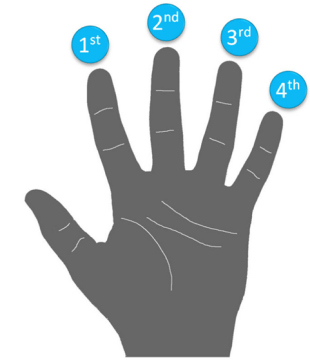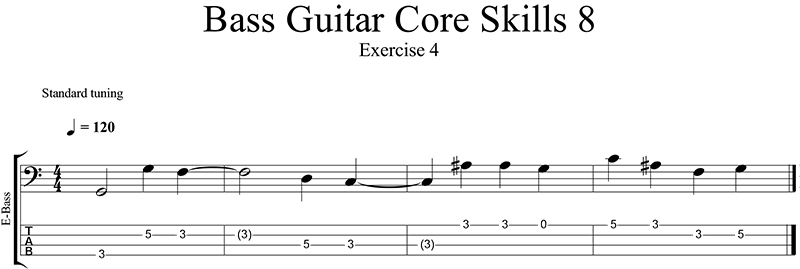
Bass Lesson Eight - String Muting

String Muting
To get the best impact from any bass line it’s important for notes to be played cleanly and individually.
To achieve this we must be sure that we only let the strings ring out that we want to.
If notes are left to bleed over one another and other strings are accidentally caught the bass line starts to sound messy and we lose clarity.
Also because the bass guitar is usually amplified any unwanted noises are amplified too!
To avoid this from happening we use string muting techniques. This means using both the fretting and the plucking hand to stop the remaining strings that are not being played from ringing out or making any sound.
Overall String Muting Technique
The lower pitch strings than the one being played need to be muted by the plucking hand. The strings that are higher in pitch than the one being played need to be muted by the fretting hand.
For example, if you are playing any note on the A string the thumb of the plucking hand will be resting on the E string and the 1st finger of the fretting hand will be resting over the G and B strings.
This leaves the A string to ring out alone whilst the remaining 3 strings of the bass are silenced.
Fretting Hand Muting Technique
You can use the 1st finger to mute by gently laying the finger over the strings, but not pressing down to the fret. When fretting with the 1st finger it helps to press with the pad rather than the tip. This will leave the finger straighter and closer to the fret board and in a better position to mute the remaining strings.

Plucking Hand Muting Technique
If you are playing the E string all of the muting will be done by the fretting hand. If you play the A, D, or G string the thumb can be placed on the string above or if you are not using the 3rd finger to pluck you can also rest that on the above string. For example, if you are plucking the D string the thumb can be placed on the E string, the third finger can be placed on the A string and the remaining G string would be muted by the fretting hand.
So by using both the fretting and plucking hand to mute you will get good overall control of which strings play and the sound produced by the bass.
Exercise
Play through the exercises ensuring that you are using the muting technique we have looked at for both the plucking and fretting hands. Try to get accurate timing so that each note ends as you transfer to the next.
Things to think about:
• There is no unwanted noise form other strings
• Notes are not overlapping one another
• The plucking hand is muting the lower pitched strings than the one being played
• The fretting hand is muting the higher pitched strings than the one being played
Exercise 1
Easy Tab

Standard Tab

Exercise 2
Easy Tab

Standard Tab

Exercise 3
Easy Tab

Standard Tab

Exercise 4
Easy Tab

Standard Tab

What Next?
In next week’s lesson we will be finding out about the benefits of good string crossing and the techniques used to achieve it.